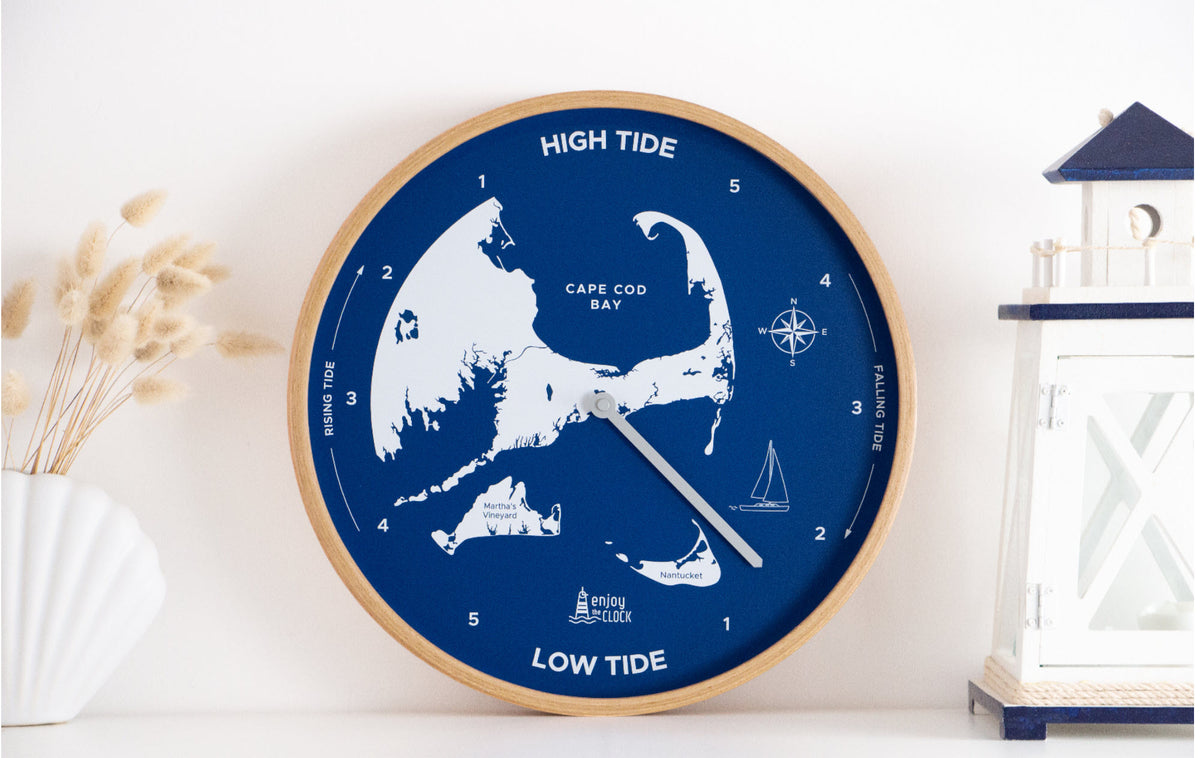A tide clock is designed to indicate the time remaining before a high tide or a low tide for a given region: city, port, beach, etc. Its operation is based on a specific mechanism, which makes one revolution of the dial in 12 hours 25 minutes and 14 seconds.
12h 25m 14s, why this time?
This time which punctuates the tide clock finds its origin in the influence of the Moon. Indeed, over the duration of a lunar cycle, which is approximately 29.5 days, the average time between 2 high tides (or 2 low tides) is 12 hours, 25 minutes and 14 seconds. Thus, the movement of the tide clock was adjusted to reproduce this average time between 2 tides.
However, it is important to note that the lunar cycle is not perfectly regular due to the tilt of the lunar orbit and other gravitational disturbances. Therefore, the exact time between two high tides can vary from day to day and place to place, but the average over the duration of a lunar month is 12 hours, 25 minutes and 14 seconds.
It is completely normal to observe a slight discrepancy between the indication given by the tide clock and the SHOM predictions. However, if the tide clock has been set based on a New Moon day, the accuracy will be optimal over time. This is why we favor this setting method.How to read a tide clock?
The clock face corresponds to a complete tide cycle, i.e. 1 high tide and 1 low tide. The left part of the dial corresponds to the rising tide, while the right part corresponds to the ebb tide.
In the example below, the needle is on the right and points between 2 and 1, meaning that low tide will occur in 1h30.
